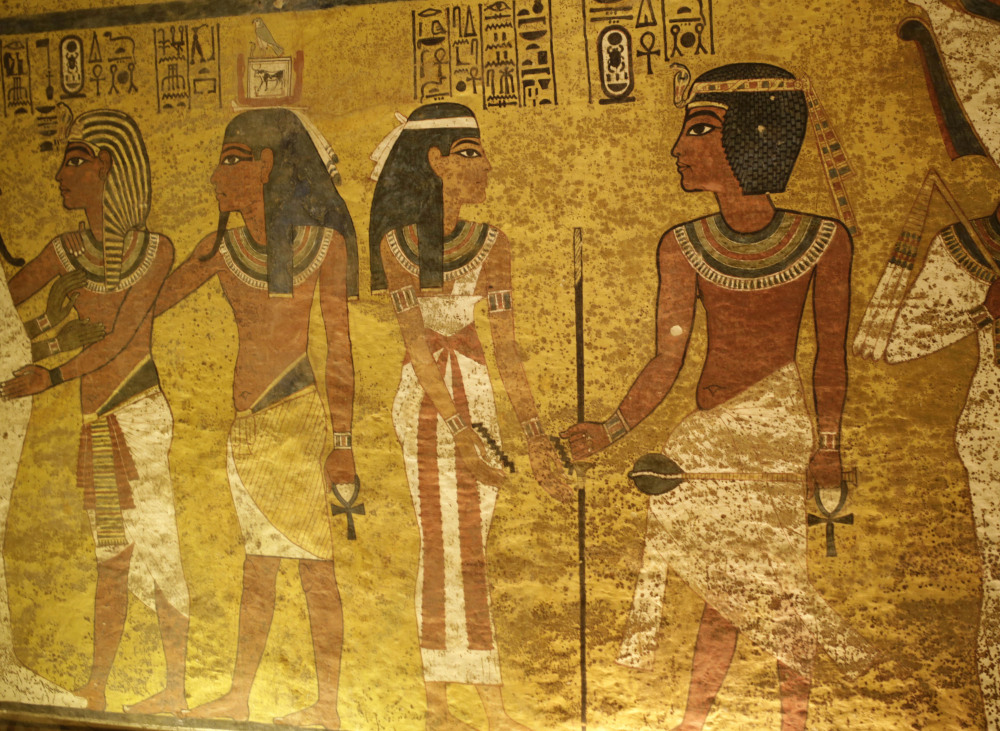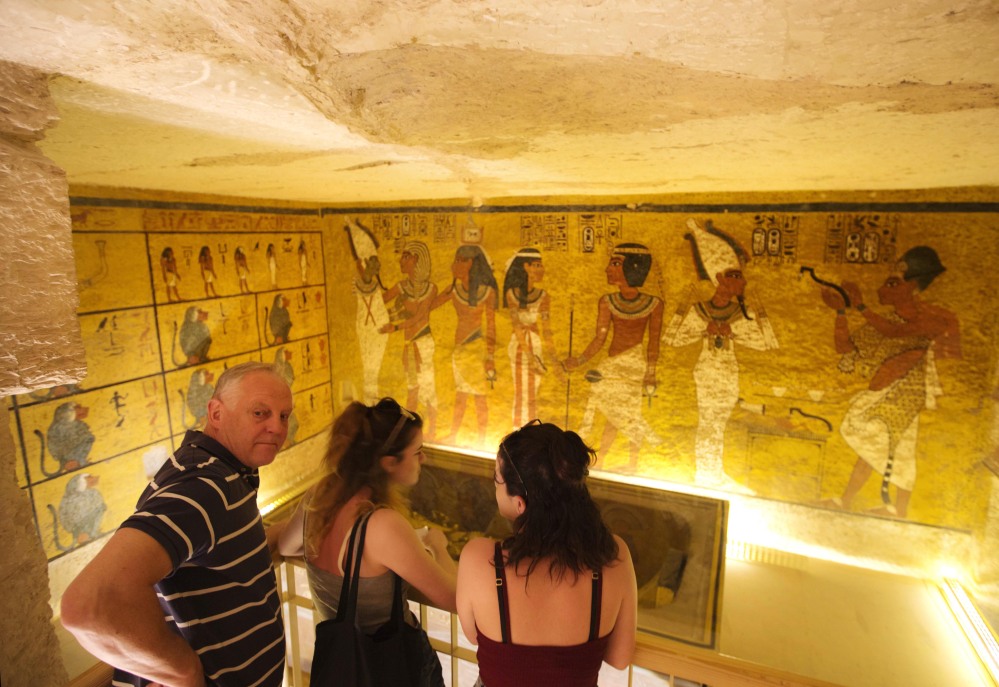VALLEY OF THE KINGS, Egypt — Egypt on Friday invited archaeologists and experts from around the world to examine data from new, extensive radar scanning conducted on King Tutankhamun’s tomb to explore a theory that secret chambers could be hidden behind its walls.
The open invitation to a conference in Cairo in May, issued by the antiquities minister at a news conference just outside the tomb, aims to bring broader scientific rigor to what so far have only been tantalizing clues.
The new exploration was prompted by a theory of British Egyptologist Nicolas Reeves that undiscovered chambers lie behind the tomb’s western and northern walls and that they likely contain the tomb of Queen Nefertiti, one of pharaonic Egypt’s most famous figures – whose bust, on display at the Berlin Museum, is a much storied symbol of ancient beauty.
Preliminary scans whose results were announced last month suggested two open spaces with signs of metal and organic matter. Egypt’s archaeologists announced Friday they completed more extensive scanning, sponsored by National Geographic, and the results must now be analyzed.
If chambers – whether containing Nefertiti’s tomb or not – are discovered behind the western and northern walls covered in hieroglyphs and bas-reliefs in Tut’s tomb, it would likely be the biggest discovery in Egyptology since Howard Carter first found the king’s 3,300-year-old burial chamber and its treasures in 1922.
Antiquities Minister Khaled el-Anani advised caution.
He said Egypt’s “scientific credibility” and the preservation of its antiquities were at stake, adding; “We will rely only on science going forward. There are no results to share at the current stage, but only indications. We are not searching for hidden chambers, but rather we are scientifically verifying whether there are such rooms.”
Another radar scan will be carried out at the end of the month. It will be done vertically from atop the hill above the tomb, using equipment with a range of about 40 yards.
Harvard University Egyptology professor Peter Der Manuelian said the Valley of the Kings is “notorious for containing fissures, cracks” that complicate interpreting the scans.
“So the more scans we do, and from different angles and directions, inside and outside the tomb, the better,” he told The Associated Press.
Send questions/comments to the editors.




Success. Please wait for the page to reload. If the page does not reload within 5 seconds, please refresh the page.
Enter your email and password to access comments.
Hi, to comment on stories you must . This profile is in addition to your subscription and website login.
Already have a commenting profile? .
Invalid username/password.
Please check your email to confirm and complete your registration.
Only subscribers are eligible to post comments. Please subscribe or login first for digital access. Here’s why.
Use the form below to reset your password. When you've submitted your account email, we will send an email with a reset code.